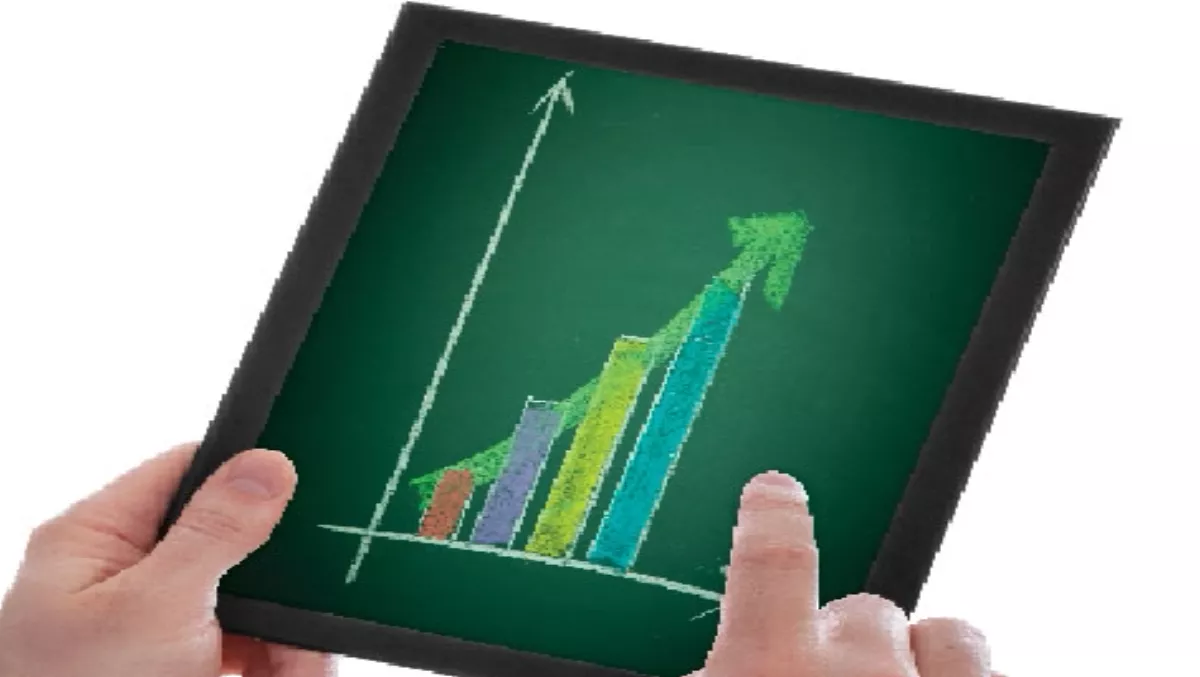
The iPad 2 just hit our shores. Faster CPU, videoconferencing, and HDMI video out for corporate presentations. These represented the grand total of what could charitably be labelled as enterprise features in the new Apple tablet. In fact, you could argue that some of the iPad 2’s new features would actually put off enterprises. But you couldn’t be further from the truth. There is little doubt the combination of hardware sexiness and great user interface and applications will win the iPad 2 a religious following, just like the ‘Jesus Phone’ and first iPad.According to IDC, half of the iPads used at work are being brought in as individually-owned devices. The other half are being deployed by organisations who have calculated that the productivity gains from equipping executives, salespeople, business analysts and others with iPads, outweigh the inability to lock them down with hundreds of group policies – the typical overkill on a corporate PC. A Sybase survey in the US found improvement in creativity and innovation was cited as the number one benefit tablets could bring to the workplace (18%), closely followed by efficiency, time savings and problem solving (16%) and communication, collaboration and productivity (14%).Let us take a closer look at the merits of a tablet over the smartphone, as a productivity tool:Tablets are the most effective mobile form factor. Tablets, by design, strike the balance between the usability of a laptop and the portability of a smartphone. While mobile operating systems continue to improve, their power will always remain partly untapped on a three- to four-inch screen. The additional real estate provided by a seven- to 10-inch tablet screen ensures that applications run well, workers are productive and shoulders free from heavy computer bags can breathe a sigh of relief.Tablets will finally bring to life the dream of mobile unified communications. Unified communications (UC) is another technology that has been around for some time but has only recently made market inroads. Small tablets will be able to integrate into a desk phone and provide a vibrant virtual keypad when docked. When fully mobile, the tablet (with its high-definition screen) will allow mobile telepresence through its built-in webcam.UC is about more than videoconferencing, it’s about collaboration. As software and networks catch up to tablets, we’ll soon be able to talk to colleagues while editing the same document—something impractical on smaller smartphones.Tablets improve employee efficiency and customer satisfaction in new ways. Laptops and smartphones have started to mobilise industries such as healthcare and hospitality, as well as verticals where field work is common. Tablets bring unprecedented power, ease and style.With a tablet, a physician can look up patient medical records while making rounds, improving quality of care. In a hotel, tablet-wielding concierges can register guests for events or dinner reservations, increasing revenue and guest satisfaction. Field service technicians can see their next appointments and pull up technical documents while performing a repair, minimising the number of visits required to complete a service ticket. In all of these cases, operational efficiency increases, as does customer satisfaction.Tablets remove the need for the stylus. Today’s smartphone touch screen excels in many areas, but precision data entry is not one of them. Filling out intricate forms remains easier with a stylus, especially in dusty, dirty environments. But in non-extreme environments, touch-based tablets are large enough that fingers become a sort of "organic stylus”. Seemingly trivial at face value, this capability enables tablets to offer an attractive middle ground between touch-based smartphones and stylus-based devices.Tablets make the mobile internet bi-directional. Smartphones have certainly been revolutionary, but they still, by and large, provide only a means to consume information from the internet. The tablet’s larger size and precision means that workers will be more willing to create content on their mobile devices. Emails will go from being short responses to more substantive correspondence with attached documents created on the tablet.Individuals will also be more adept at entering information into a corporate application – such as a customer relationship management (CRM) application, enterprise resource planning (ERP) system or human resources (HR)-oriented time-and-expense application – using a tablet. Making it easy for employees to move data to and from their tablet is something the smartphone lacks. This added dimension of a tablet will increase the business velocity of the mobilised workplace.Today, with the wide adoption of smartphones in both the workplace and general life, the world has welcomed and, in fact, demands mobile connectivity and computing. The tablet PC as a device using a true mobile operating system (iOS, Android, webOS and so on) will catalyse the second wave of growth in enterprise mobility.At the same time, the stellar rise of tablets also raises a new round of security concerns in the continued consumerisation of enterprise IT. IT departments are increasingly looking for mobility solutions that let them enforce corporate policies across multiple platforms, personal and company devices. Most sought-after are products that effectively combine best-of-breed management and security capabilities and thus help businesses make their mobile investment future-proof.This phenomenon, coined ‘Bring Your Own Device’ mobility, offers the channel significant business opportunities it would be ill-advised to ignore.